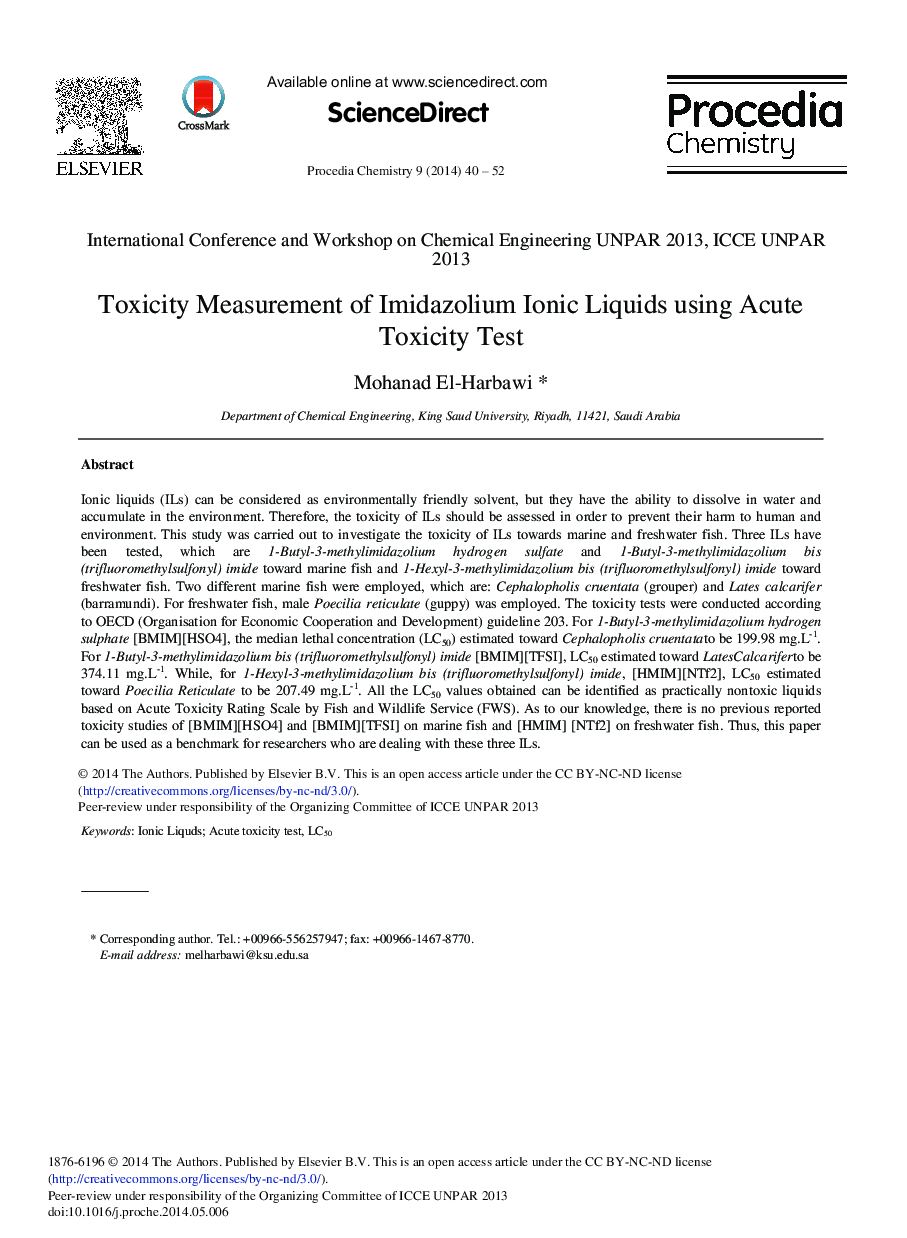| Article ID | Journal | Published Year | Pages | File Type |
|---|---|---|---|---|
| 240014 | Procedia Chemistry | 2014 | 13 Pages |
Ionic liquids (ILs) can be considered as environmentally friendly solvent, but they have the ability to dissolve in water and accumulate in the environment. Therefore, the toxicity of ILs should be assessed in order to prevent their harm to human and environment. This study was carried out to investigate the toxicity of ILs towards marine and freshwater fish. Three ILs have been tested, which are 1-Butyl-3-methylimidazolium hydrogen sulfate and 1-Butyl-3-methylimidazolium bis (trifluoromethylsulfonyl) imide toward marine fish and 1-Hexyl-3-methylimidazolium bis (trifluoromethylsulfonyl) imide toward freshwater fish. Two different marine fish were employed, which are: Cephalopholis cruentata (grouper) and Lates calcarifer (barramundi). For freshwater fish, male Poecilia reticulate (guppy) was employed. The toxicity tests were conducted according to OECD (Organisation for Economic Cooperation and Development) guideline 203. For 1-Butyl-3-methylimidazolium hydrogen sulphate [BMIM][HSO4], the median lethal concentration (LC50) estimated toward Cephalopholis cruentatato be 199.98 mg.L-1. For 1-Butyl-3-methylimidazolium bis (trifluoromethylsulfonyl) imide [BMIM][TFSI], LC50 estimated toward LatesCalcariferto be 374.11 mg.L-1. While, for 1-Hexyl-3-methylimidazolium bis (trifluoromethylsulfonyl) imide, [HMIM][NTf2], LC50 estimated toward Poecilia Reticulate to be 207.49 mg.L-1. All the LC50 values obtained can be identified as practically nontoxic liquids based on Acute Toxicity Rating Scale by Fish and Wildlife Service (FWS). As to our knowledge, there is no previous reported toxicity studies of [BMIM][HSO4] and [BMIM][TFSI] on marine fish and [HMIM] [NTf2] on freshwater fish. Thus, this paper can be used as a benchmark for researchers who are dealing with these three ILs.
